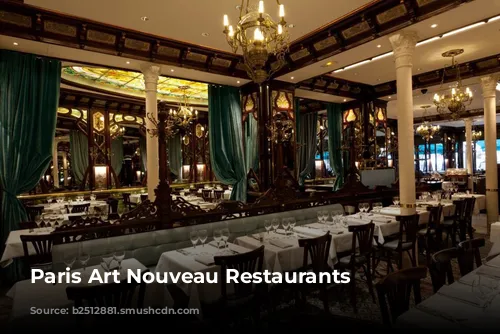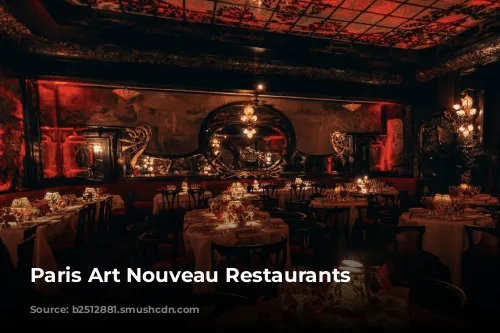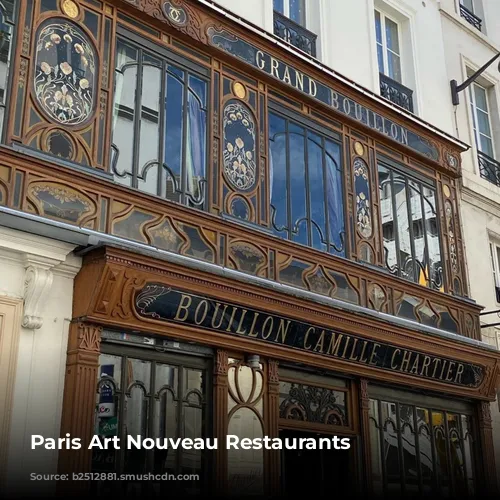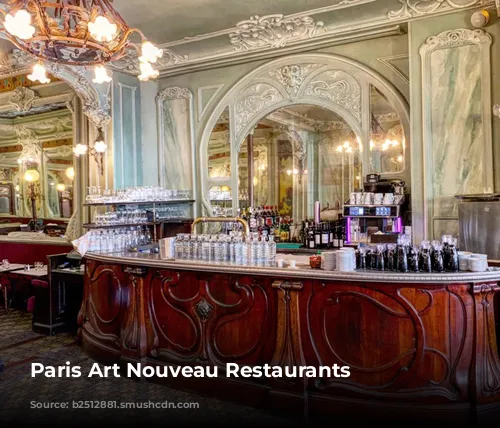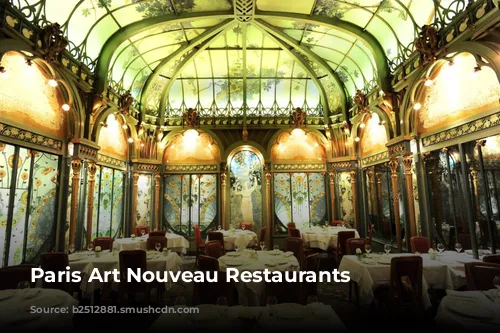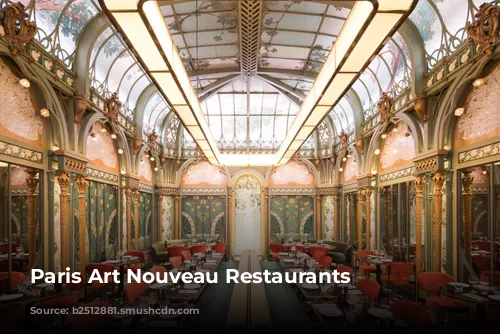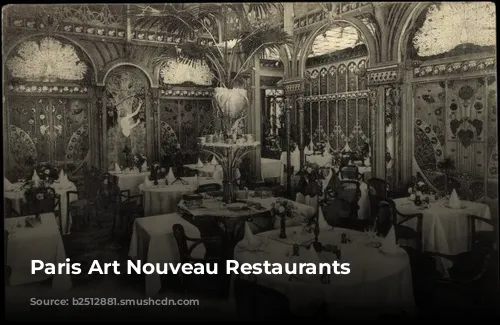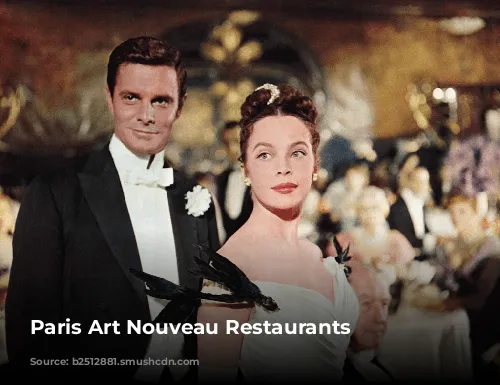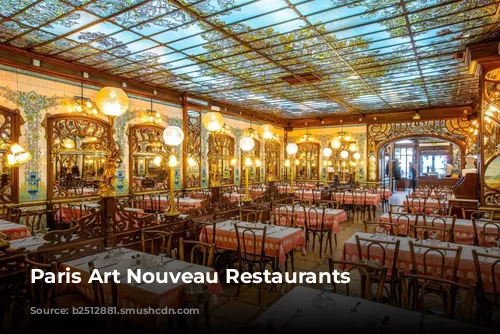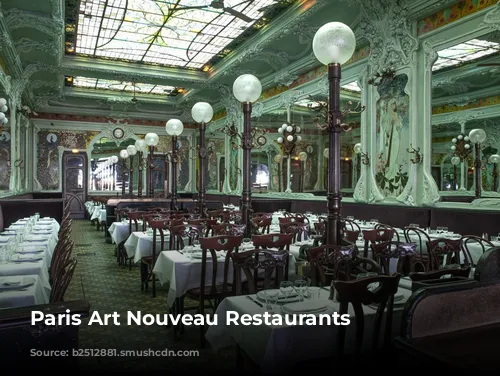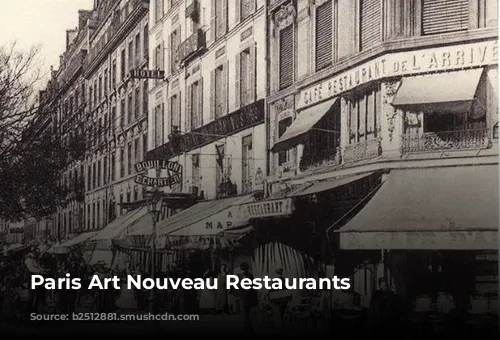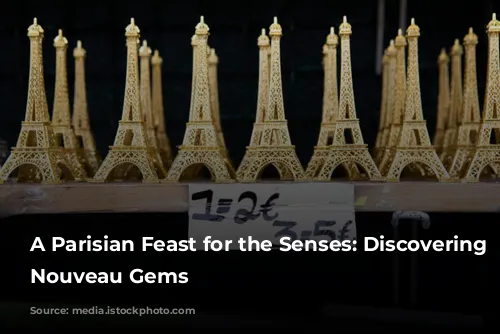Art Nouveau, a decorative style that blossomed in Paris from around 1890 until the First World War, infused the city with a unique aesthetic. Inspired by nature’s graceful forms and gentle hues, Art Nouveau transformed Parisian interiors, bringing a touch of elegance to everything from doorways to lamps.
A Glimpse of the Past: Art Nouveau Interiors in Parisian Restaurants
The influence of Art Nouveau, however, wasn’t limited to the city’s grand buildings. It permeated the interiors of restaurants, creating an atmosphere that transformed dining into a multi-sensory experience. These restaurants, carefully preserved, offer a glimpse into the city’s artistic past, transporting diners back to a bygone era.
While some architects embraced Art Nouveau, it found its true home in the interiors of Parisian establishments. This delicate style, however, was perhaps too subtle for the evolving, industrial world, which embraced the more geometric lines of Art Déco. Yet, the legacy of Art Nouveau lives on in the magnificent interiors of many Parisian restaurants.
Six Restaurants That Embody Art Nouveau’s Charm
Maxim’s, a Parisian institution since 1893, boasts an iconic interior that evokes a magical forest. Its candelabra, reminiscent of exotic trees, its light shades resembling nocturnal blooms, and its lush floral carpet, all contribute to a heady, glamorous atmosphere. It’s no wonder that from Marcel Proust to Brigitte Bardot, the city’s elite embraced Maxim’s as their second home.
The restaurant’s moody lighting and decadent garnet-and-gold detailing create a sense of dark sensuality. This sultry ambiance cemented Maxim’s reputation as a haven for mistresses rather than wives, making it the perfect backdrop for a pivotal scene in the 1958 film “Gigi.”
While Maxim’s is a popular destination for tourists, it’s also renowned for its expensive prices. Nevertheless, for those who appreciate interior design and history, a meal at Maxim’s offers a transportative experience that revives the spirit of a long-lost Paris.
Beefbar: A Hidden Gem Unveiled
Nestled in the heart of Paris, Beefbar occupies a space that was once the winter garden of the old Langham Hotel. This historic room, dating back to 1898, boasts a unique story that adds to its charm.
When the hotel closed its doors, the restaurant was sealed away for protection during World War II. It remained completely forgotten until new owners discovered the hidden room during renovations in the late 1970s. Today, Beefbar operates within this Art Nouveau jewel, which has been classified as a historical monument.
To experience the spectacular room, be sure to request a table in the Art Nouveau space when making your reservation. And don’t worry, despite the restaurant’s meaty name, vegetarian options are available.
Brasserie Vagenende: A Timeless Parisian Treasure
Don’t be fooled by Brasserie Vagenende’s unassuming exterior, as within lies a hidden Art Nouveau gem. The restaurant, originally a patisserie, was transformed into a beautiful brasserie in 1904 by the Chartier brothers.
The Vagenende family, who took over in the 1920s, preserved this architectural treasure through a period of rapid change. When a supermarket threatened to replace the brasserie in the 1960s, French Culture Minister André Malraux stepped in to protect this historic Parisian landmark.
Today, Brasserie Vagenende is a listed heritage site, with its sumptuous interior flawlessly preserved. Gleaming mirrors, curvaceous woodwork, painted glass panels, and a magnificent stained-glass ceiling, all create a sense of old-world glamour.
The menu, too, reflects a nostalgic France, offering classic dishes like mimosa eggs, onion soup, and hearty homemade main courses. It’s the kind of restaurant that beckons diners back again and again, reminding them of the timeless charm of Parisian cuisine.
Bouillon Chartier: A Culinary Time Capsule
The Bouillon Chartier, founded in 1896 by Edouard and Camille Chartier, was more than just a restaurant; it was a symbol of a changing Paris. The brothers, guided by Art Nouveau principles, transformed the concept of a “bouillon,” a working-class eatery offering cheap, hearty soups and stews, into a brasserie for the upwardly mobile.
The Bouillon Chartier Montparnasse, the chain’s second location, boasts an interior untouched by time. The entire ceiling, adorned with floral glasswork, creates a hothouse effect, while floral wall mosaics and gleaming orbs contribute to a golden, sunny ambiance.
The vintage menu, a reflection of the Chartier brothers’ original vision, offers traditional dishes like terrine, snails, roast chicken, and duck confit, all served in a unique setting that combines elegance and affordability. The Bouillon Chartier is the epitome of Parisian fast food, offering a three-course meal for around €20.
Bouillon Racine: Art Nouveau Elegance Reborn
Bouillon Racine, another Bouillon Chartier creation, opened its doors in 1906. After serving as a canteen for the Sorbonne for several decades, its glamorous ambiance faded. However, new owners restored the interior to its former glory, employing Art Nouveau techniques like bevelled mirrors, painted opaline, and stained glass.
Today, Bouillon Racine is a classified monument, its interior a testament to Art Nouveau’s enduring beauty. While the design evokes the restaurant’s origins, the seasonally updated menu offers a fresh take on classic French cuisine.
Brasserie Julien: A Parisian Legend Reimagined
Brasserie Julien, another historic Parisian landmark, has recently returned to its original bouillon roots, offering affordable prices and a visually stunning dining experience. This immaculately preserved restaurant, dating back to 1906, is considered one of the most beautiful dining rooms in Paris.
Gleaming woodwork, including a mahogany bar by Louis Majorelle, soothing pale green walls, exquisite mouldings, and murals and stained-glass, all contribute to a sense of Art Nouveau elegance. Édith Piaf, the legendary French singer, was a regular at Brasserie Julien, adding to its aura of Parisian glamour.
These six restaurants, each a testament to Art Nouveau’s enduring appeal, offer a unique opportunity to experience a bygone era, immersed in a world of beauty, history, and exquisite cuisine. Their interiors, meticulously preserved, offer a glimpse into the city’s artistic past, inviting diners to savor the magic of a long-lost Paris.

